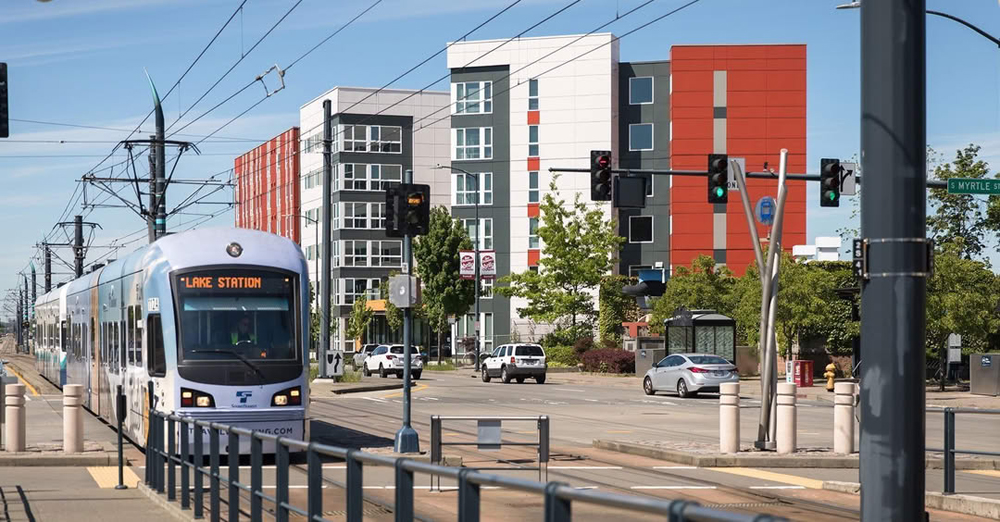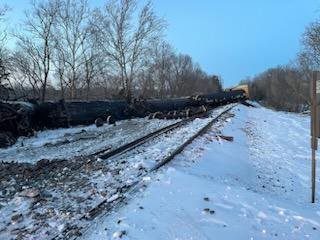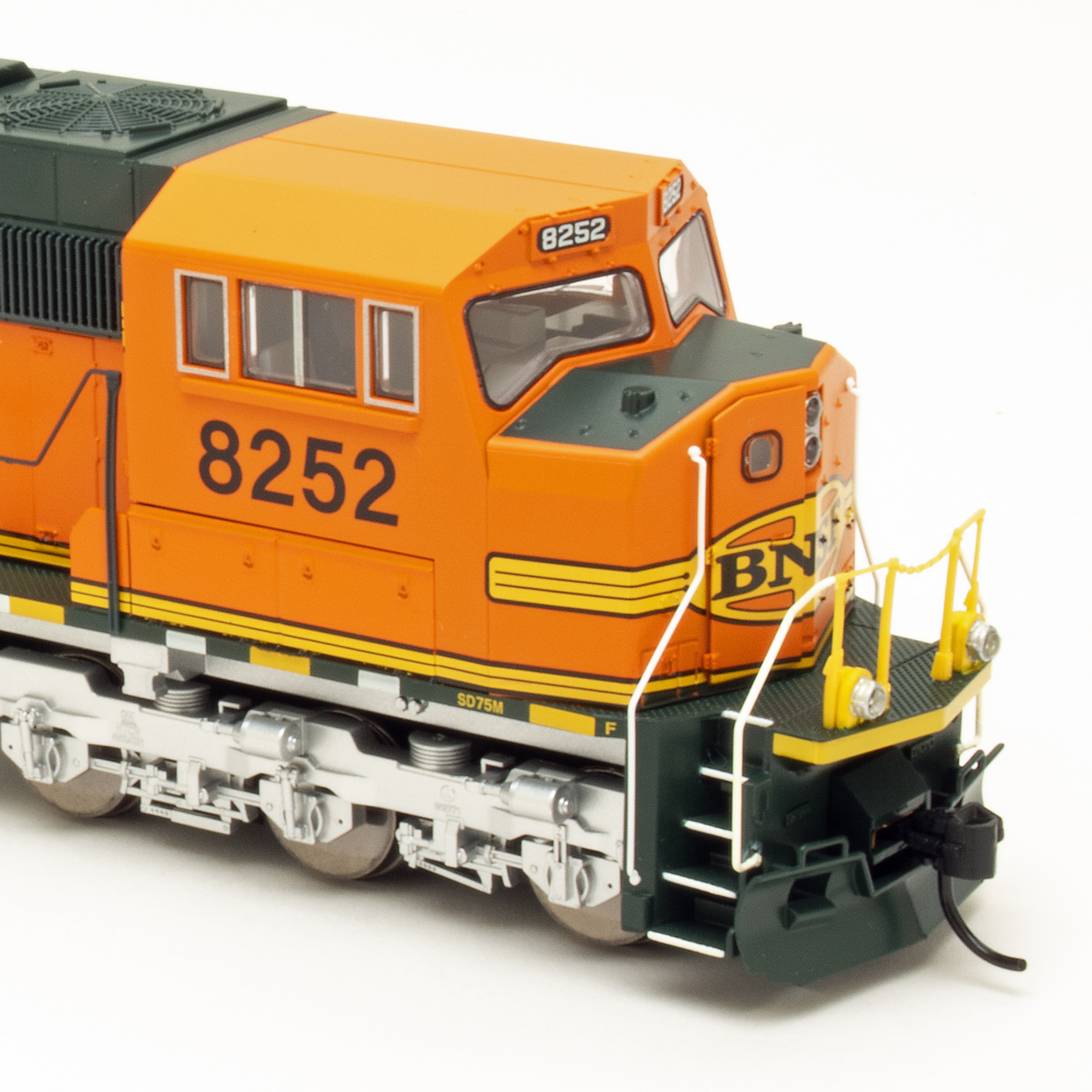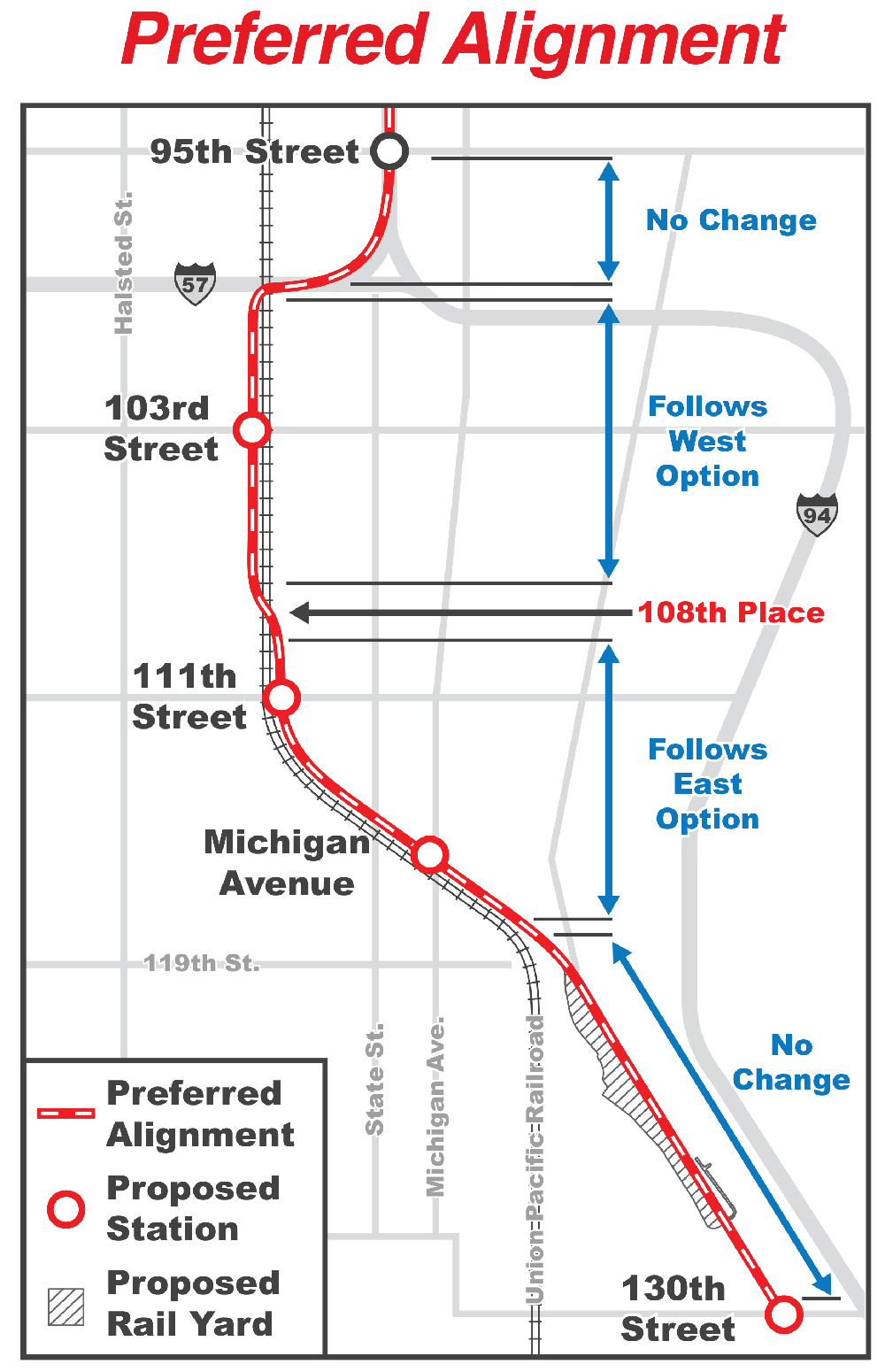All Aboard Washington acknowledged it has a special interest in the subject, and not just because of its focus on passenger rail. Two of its longtime members, Jim Hamre and Zack Willhoite, were killed in the December 2017 derailment.
“Our colleagues … would recognize the need to make appropriate safety improvements,” the association said in a website posting. “But they would also push for improved Amtrak Cascades service without further delay.
“The need for fast, frequent, and reliable passenger rail service has never been more urgent. The traveling public wants a convenient, environmentally-friendly service that is safer than driving,” AAW added. “With the right service improvements, the Cascades can meet this demand. But additional daily Cascades trains, with shorter running times between Seattle and Portland, cannot be implemented until the Bypass is in use.”
All Aboard Washington said it believes improvements have been made, including installation of positive train control, sufficient to allowing the reopening of the bypass.
“As taxpayers and consumers, we feel that our tax dollars are best spent building fast, reliable and frequent passenger rail service,” AAW said. “We believe that further postponing Cascades service on the Point Defiance Bypass — for which we have already paid $181 million — is detrimental to the interests of the Puget Sound region, the Pacific Northwest, and the traveling public as a whole. The taxpayers of Washington state have invested a significant sum of money to improve a useful service along a busy corridor. Let’s make that improved service a reality without delay.”
All Aboard Washington representatives testified at a hearing of the House Transportation Committee Jan. 15 in support of HB 2287, a bill intended to address some of the issues of safety-policy coordination identified by the National Transportation Safety Board. According to a legislative summary, the Joint Transportation Committee “is required to oversee a consultant study on rail safety governance best practices and recommendations for the implementation of these best practices in Washington.”
WSDOT, the Utilities & Transportation Commission, the UTC, Sound Transit, the NTSB, Amtrak, the Federal Railroad Administration, BNSF Railway, and other entities with rail safety expertise are to be interviewed as part of the study, which is to be turned in by Jan. 6, 2021.
“We agreed that the lack of coordination between federal, state, and local agencies and private entities was a contributing factor to the disaster, and we applauded the proposed improvements in the institutional framework for rail safety,” AAW said in summarizing its testimony in support of the bill. “However, we emphasized that passenger trains are very safe, many times safer than private motor vehicles. We also emphasized that the excessive speed in this incident — 79 mph in a 30 zone — would have brought about disaster, regardless of who owned the track, who operated the trains, or what specific passenger car equipment was involved.”
The association repeated its call for “a return to full service on the Bypass as soon as possible.” It also recommended a “tangible, permanent memorial” to Hamre and Willhoite be placed at the new Freighthouse Square Amtrak station in Tacoma, to be used by Cascades trains and the Coast Starlight once the bypass route is reopened.














It’s absurd that the bypass is still not open. The NTSB was throwing blame for the crash in all directions, but the only obvious cause is ‘pilot error’. The politicians and bureaucrats in charge of saying “open the bypass’ are keeping their heads down because they are afraid that if one accident of any kind happens on the bypass, they will get the blame. It’s absurd that Amtrak didn’t start the process of getting the “Beech Grove Talgos” ready for Cascades service soon after the crash. “get ‘er done!”. America used to be a country that could get things done, but nowadays everyone is afraid of saying “yes”.
All the screeching seems to come from Tillicum led by a person who owns a business there claiming that, “…every day trains run down innocent people.” Apparently there is no understanding that train tracks are owned property of the railroad and that walking on the tracks or crossing the tracks except at a grade crossing, is trespassing. So if a train hits a person, it’s not the train that’s wrong, it’s the person.
Apparently that’s just too difficult for some people to understand.
I have been monitoring local (message) traffic in the Lakewood – Dupont area. There is a fairly vocal crowd who think the Point Defiance Bypass should remain closed, and closed to ALL traffic. Although they are couching their argument in terms of “safety” the real objection is what the noise and traffic will do to real estate prices.
NIMBYism at its finest …
The above comments are cynical in nature and do not form the basis for an attorney/client relationship. They do not constitute legal advice. I am not your attorney. Please don’t drop that H-bomb on me, go drop it on yourself.
The Lockheed Electra turboprop and the Douglas DC-10 had problems (meaning crashes due to design flaws) but continued in service. I have flown both and am still alive to tell about it.
0
J Robert Wayman, or how about the DH Comets. A redesign and then back in production with the shape of the windows changed. Yes, I have flown on one, when it was new. That same air frame type was, until 2011, in use by the RAF. In fact, the two prototypes were built using unfinished Comet 4s to build upon.
The reason for building it was BNSF wouldnt allow more passenger trains on the existing route. Even with this , I think it is only allowing one more return per day .
@Allen Graetz: “billion dollars to try to shave 8 minutes of a trip”, times how many people would use the line over its lifetime adds up to large amount of productivity gains.
This is why so many railroads spent the 1920’s making investments in tunnels, regrades, raising ROW’s at a large cost, because the reduction in fuel use and increase of productivity and time savings may seem somewhat small at first, but when you add it up over 100 years, its quite huge.
I still think most Class 1’s have a lot more to invest in route optimizations, (removing grades. inefficient routings) and BNSF seems to be out front on this.
I just don’t think we are very efficient in getting these service offerings in place and waste the money on the bureaucracy instead of the updates needed.
The core problem is that these bureaucrats spent nearly a quarter of a billion dollars to try to shave 8 minutes of a trip. There wasn’t a compelling case for using it in the first place. And as we’ve seen, there’s good reason it wasn’t being used before WaDOT & Co. find yet another wasteful project.
This is the first time I heard they were ejected from the train, my heart and thoughts go out to their families and all individuals and their families involved in this tragedy.
Anna said, “Perhaps what they should do is to dedicate it to freight traffic and run the passenger traffic over the current line, devoid of freight traffic.”
This will never happen. The southward grade (departing Tacoma) on the “Point Defiance Bypass” is 2.2 percent. The northward grade (departing Nisqually) is 1.25%. Many of the trains operating on the current route via Steilacoom do not have sufficient power to traverse the steeper route. This includes all grain trains for Tacoma/Temco (the export facility) which is on the currently-used route via Steilacoom. It’s unlikely BNSF and UP would agree to provide additional power for this purpose, and the steeper route is also single track with few sidings, which would exacerbate the congestion.
Anna’s wording is not clear on “freight traffic”, but for clarification, both routes do have freight traffic. The current route (via Steilacoom), obviously, but also the “Point Defiance Bypass” (the route where the derailment occurred) to serve local customers, including Joint Base Lewis McChord.
Please forgive my mistype–the earlier post was by Walter Rittle–not Whittle. Mea Cupla.
Mr. Whittle’s speculation on where Jim and Zack were at the time of the derailment is not vindicated by the final NTSB accident report. Please note I do not say this in anger. I also thought they might have been up in a vestibule area getting preparing to get photos of Nisqually Junction, which would have been passed in less than a minute. But the NTSB report strongly suggests otherwise. In the end it doesn’t really matter.
They were apparently in their seats in a row which was subjected to both the ripping out of the windows and by side-wall collapse–which may have been partially caused by a wheel-set assembly that broke loose and penetrated the car. Jim (and Zack) were ejected from the train. Jim at least was found on the ground next to wreck. See Page 53 of the NTSB report.
This was confirmed in the “Transit Sleuth” blog, written by Adron Hall, a survivor of the disaster. The deeply felt report from the gentleman who reported seeing Jim’s body outside the train is at https://transitsleuth.com/2017/12/ . Navigate down to “The Story of Amtrak Cascades Train 501 Derailment”.
Long-term readers will forgive me for a repeated tribute which follows:
Jim Hamre was the brother I never had and Zack was a great friend as well. I think of them and mourn their fate every day. And I so deeply miss them both. Both were not only rail advocates, but also life-long transportation professionals.
Jim was a recently retired Wasington State DOT highway engineer/systems specialist–a long term RPA/NARP Board member and the son of parents who were both Milwaukee Road railroaders. Jim was the kindest man I ever knew and had a remarkable way of seeing the best in people and communicating with anyone as a colleague/friend. I first met Jim in 1981, as we were mutually lobbying to improve the Seattle-Portland corridor. That he should die 36 years later on the first train over the rebuilt route is beyond cruel irony!
Zack was a bus schedule/computer specialist who deeply supported multi-modalism. Zack could fix any computer or phone problem and was quietly funny and astute. He even owned his own historic 1970s city bus! Alas he was newly married shortly before he passed.
If nothing else they were both such fun to know and the finest traveling companions ever. Of course they did not miss the first run of the expanded CASCADES route–alas!
Talgo disputes the NTSB conclusions about its equipment and indeed it would be almost completely impossible to conceive of a worse stress test for any train-set than the catastrophe at Dupont. But I still hope to see the wavered Series Six Talgo train-sets replaced as soon as possible and I say this as someone who has loved the Talgos from the day they were introduced. They are by far the classiest corridor equipment in use in the USA, but the Dupont accident leaves very open the question of their use a day once past the arrival of a fleet of new, fully US crash-compliant cars. Amtrak’s eternal equipment shortage makes that awhile from now.
I share with Ms. Vinson the regret that only freight trains will soon traverse the beautiful Puget Sound-side Point Defiance Line. But Tacoma will gain a true “union station” when Amtrak joins Sound Transit at the fine new Freight House Square Station. The new line should take at minimum ten minutes out of the Seattle-Portland schedule. I second the need to honor Jim and Zack there. Perhaps the new Amtrak waiting area at Freight House Square might be named “The Jim Hamre/Zack Willhoite Memorial Concourse” in their honor?
PTC is now in place on the Point Defiance by-pass, and while nothing in this world is impossible, the combination of signage, signals, training, accident memories and above all PTC, makes another accident at Dupont very unlikely indeed. Danger exists everywhere, but with proper supervision and in the real world of railroading (which remains very, very safe compared to other modes–particularly the auto) it is far more likely that the next accident will be somewhere other than on the sharp curve at Dupont.
In any event I share the hope for the resumption of the expanded CASCADES schedule, which can only occur on the more direct new route (and after the delivery of at least one added train-set). The rumored assignment of the two never-used, but US crash compliant, brand new Talgo Series Eight sets, (built for the cancelled Madison, WI service), may be the catalyst to finally serve the new line. Long-stored at Beech Grove these units have recently moved to the Talgo Plant in Milwaukee for some unspecified future. Could their ultimate destination be the CASCADES Corridor?
That curve – now under PTC – has gotta be the safest curve in railroading with unbelievably broad and acute awareness at all levels of operation.
Open the bypass. The Talgos are fine.
“We agreed that the lack of coordination between federal, state, and local agencies and private entities was a contributing factor to the disaster, and we applauded the proposed improvements in the institutional framework for rail safety,”
This means Sound Transit had to hire a Director of Safety before everyone could sit down and agree on the framework.
I agree, people ask me would I get on an AMTRAK train again, of course I would. I tell them if you have a car accident, don’t you get behind the wheel and drive again?
Anna, Have you forgotten how the Boeing 727 started its early years back in the 1960’s?
https://en.wikipedia.org/wiki/List_of_accidents_and_incidents_involving_the_Boeing_727.
“Since the first flight of the prototype in February 1963, a total of 119 of the 1,832 Boeing 727s built have been lost due to crashes, terrorist acts and other causes as of February 2019.”
Three crashes in 1965, 2 more in 1966. Turned out that the pilots didn’t know that as they descended and needed more power, it required more time for the engines to “spool up” delaying the needed thrust and planes would loose too much altitude and crash. People still flew on them and they were a successful plane. People will still want to travel and I think people will return to the train if it goes back to the Point Defiance route. If you have an accident in your automobile, do you stop driving?
Note. I knew of the early crashes but not that there were 119 total. Most not due to the planes faults.
After reading the entire list of accidents with 727’s, I’m surprised that anyone flew in them.
Anna Harding,
People forget a lot faster than you think, especially once it’s out of the news, this has been over 2 years ago already approaching 3. The farther away from the accident you get the less people remember, and if you don’t believe me, just look at how many people remember why the TSA is in existence. Without yearly reminders the human brain is trained to forget tragedy, that’s ingrained, so it is with this accident…as well as the millions of other accidents that have occurred throughout history.
Mark Meyer,
Don’t bring up the 737 MAX, because the first thing that should have come out of anyone’s mouth is: That wouldn’t have happened with American pilots. Nothing more needs to be said about that, and Boeing could’ve quietly fixed the issue without anyone being the wiser.
@Kevin Allin: When US-99 Pacific Coast Highway was moved from its old spot (now Nisqually Road) to where the southbound lanes of I-5 are in and around 1936, the NP moved the ROW south and built the curve to accommodate it.
Before the PCH moved, it was a gradual slant all the way to the merge with the Defiance route.
If you look at Google aerials, you can see where no trees are growing in the median where the NP ROW used to exist.
How many of the people who are fighting to keep the trains off the Bypass have actually rode on a train or plan to in the future?
Mister Landey:
The NEC accidents happened on a line with an operational history, and they were not inaugural runs. That does make all the difference.
Much of the focus of the Point Defiance accident was on the “S” curve where the line switches from one side of I-5 to the other. In the minds of many people – and believe you me when I tell you that the Pacific Northwest has far more than its share of special little snowflakes – it must somehow have been caused by the curve, and therefore the line is unsafe. Not only that, there is no way the line can ever be made safe, or so the thinking goes.
Is this logical? No. Is this rational? No. Is this herd animal thinking? Yes. Will it prevail? There is an excellent chance it will.
The above comments are cynical in nature and do not form the basis for an attorney/client relationship. They do not constitute legal advice. I am not your attorney. A person is smart. People are dumb, panicky animals and you know it.
Doesn’t anyone know that NEC at Gunpow, Maryland, was re-opened within days of the crash? Ditto NEC at Philadelphia.
Really we have enough problems in our world without snowflakes who want to close a rail line because there once was a crash there – prior to PTC. Actually the line never should have been closed in the first place. It’s safer than the route it bypasses.
I’m not minimizing the tragedy in any way. It happened. It won’t happen again.
Mister Meyer:
The problem is not that the Point Defiance Bypass route is unsafe. The problem is that the route has had a tragic, deadly, high profile accident. It is therefore “cursed” in the minds of many people.
You can install PTC. You can remove the curve. You can train the operating personnel forever. You can have a point man walking ahead of the train sounding a siren every fifty feet and shooting off flares. None of this matters. The only thing that matters is that the accident happened and the line is, as I said, “cursed”.
This is not logical, it is not even rational. But you must remember that we are not rational animals, we are rationalizing animals. There is a difference.
If the line cannot be used for freight – mention was made below of unacceptable ruling grades – perhaps it should simply be quietly retired, not to be used for the next several years until the memory of what happens fades – if it ever does.
The above comments are cynical in nature and do not form the basis for an attorney/client relationship. They do not constitute legal advice. I am not your attorney. When visiting Universal Studios ask for Babs.
I believe every rail line I’ve ever travelled has had curves. The Point Defiance route has more degrees of curvature than the Point Defiance Bypass route, including a 90 degree bend just as sharp as this one. The curve is not and never was the problem. Track structure including curvature will dictate the max safe operating speed at all points and for different types of equipment, and must be used to develop the operating plan over the route. This was entirely a failure to follow the operating plan and errors in the operating plan itself without working PTC. The track had not realigned itself the night before.
Half a mile further “south” is another turn not quite as tight as this one leading into the junction with the Point Defiance line. Is someone going to suggest straightening out that curve, too?
I find it a bit ironic that the curve in question was (I am pretty sure) introduced when the rail line was realigned to build I-5 nice and straight. And now we are trying to get a viable alternative to that congested white-knuckled drive. However, re-aligning I-5 to be able to put the rail line back where it originally was would not result in significant improvement for anyone.
There is no reason to further delay using the Point Defiance Bypass line. It can be done right, so let’s do it.
Rodney said, “How many stretches of major highway, or airports have been closed because of fatal accidents?”
This is the point exactly. And also applicable to the equipment. The Boeing 737 Max fiasco and things like automobile recall issues aside, we don’t take equipment out of service either just because it’s been in an accident. And we don’t rewrite the entire GCOR and spend untold millions on different signage just because of one incident. And we don’t “not do” something simply because this was an unfathomably unfortunate and highly visible occurrence. If we did, no one could go anywhere, even by horseback.
There is no logical reason not to begin service. And when sufficient equipment is again available, this will allow six roundtrip Seattle-Portland trains daily instead of the current four. The increase in frequency and convenience will only draw more passengers, many of whom would have driven using the much more-hazardous parallel highway.
The biggest assault on safety is NOT opening the Point Defiance Bypass and NOT increasing the frequency of the Amtrak Cascades.
Anthony;
All my best wishes to you as a survivor. I miss my friends, but you will always be reminded of the event. Thanks for the kind comment. So glad you were ok and please take care!